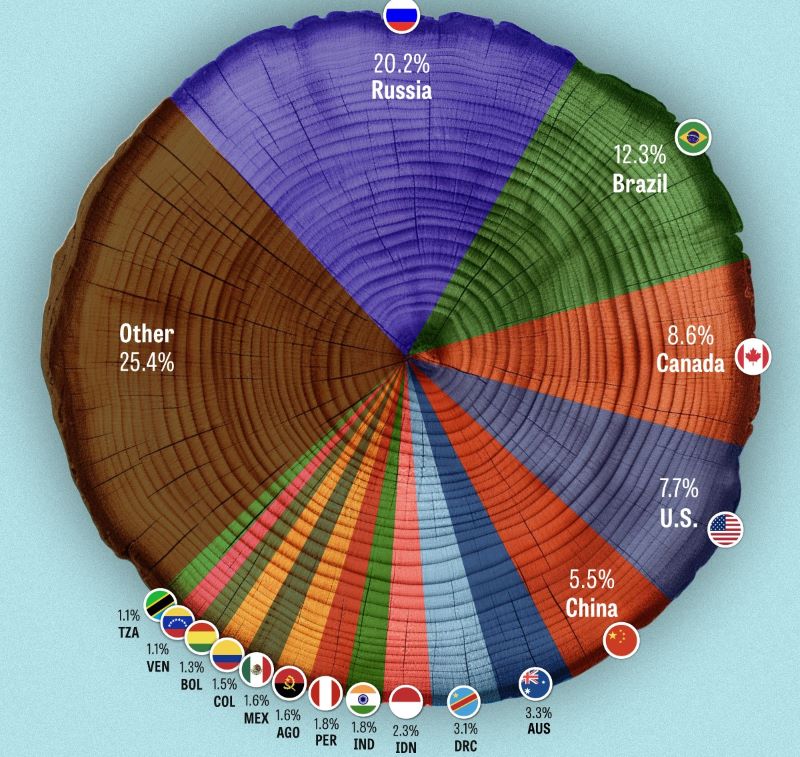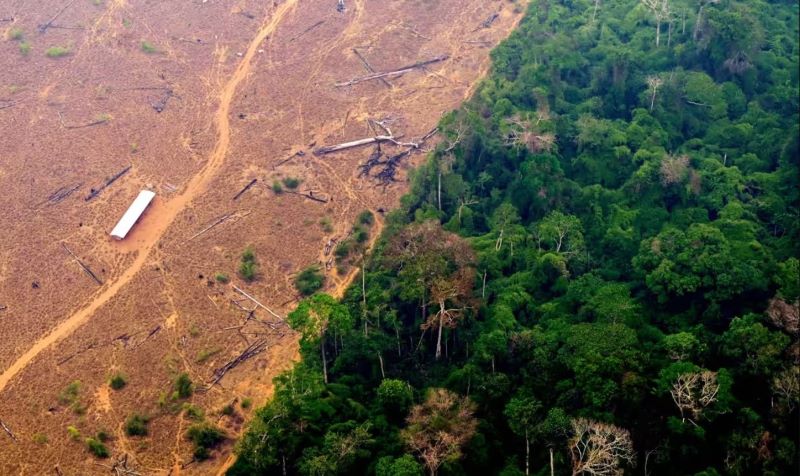Forests declining globally amid wildfires and deforestation
The global tree population exceeds three trillion, with the tropics and subtropics comprising just under half (1.3 trillion), boreal regions representing about one-fourth (0.74 trillion), and temperate regions accounting for approximately one-fifth (0.66 trillion) of the world's forests.
Russia and Brazil have the largest forest arears in the world – more than 8.1 million square kilometers (20.1%) and 4.95 million square kilometers (12.3%), respectively.
According to the United Nations, forests cover 31% of the Earth's land surface, absorbing approximately 15.6 billion tons of carbon dioxide (CO2) annually.
More to read:
What Lahaina looks like after the wildfires on the Maui Island
When examining the distribution on a per-country basis using new World Bank data, larger countries generally possess more forest area and consequently contribute a higher percentage to the world's forests. Europe, predominantly due to the vast forests in Russia, claims the largest share, representing a quarter of the global forest area. South America follows closely, contributing one-fifth of the total forest area.

The countries with the largest shares of forests by area. Credit: VisualCapitalist
Major portions of this green coverage are found in the boreal forests of Russia and Canada, the Amazon in South America, and China's coniferous and broad-leaved forests. These forests play a crucial role in air purification, water filtration, soil erosion prevention, and act as a vital buffer against climate change.
Forest loss rates are notably higher in low-income countries, OutWorldinData statistics show.
More to read:
Scientists gene-edit plants for enhanced CO2 capture and storage
Russia is the world’s largest country leads the list with over one-fifth of the world's forests, just under half of the country's total land area. Brazil, the fifth-largest and sixth-most populated country, comes second, hosting its forests primarily in the Amazon basin. Both countries have seen their forest areas shrinking over the past decade due to excessive deforestation and massive wildfires.
Russia and Brazil
From 2001 to 2022, Russia lost 80.3 million hectares of tree cover, equivalent to a 11% decrease in tree cover since 2000, and 13.4 gigatons of CO2 emissions. As much as 55.9 million hectares were lost to wildfires and 24.4 million hectares were lost because of other factors, according to the GlobalForestWatch.
Unusually high temperatures as a consequence of climate change are blamed in the majority of cases yet.

A Russian firefighter watching wildfires burning a Taiga forest in Siberia. Credit: AP
The 2021 fire season was Russia's largest ever, with 18.8 million hectares of Taiga forest destroyed primarily in Siberia - about two times the size of Ireland, says Greenpeace Russia, which blames corruption and neglect for environmental issues as the main causes. Some official reports claim the fires were the result of humans’ deliberate actions.
During the same period, Brazil lost 29.5 million hectares of humid primary forest, making up 47% of its total tree cover loss. Total area of humid primary forest in Brazil decreased by 8.6%. Illegal deforestation for commercial purpose in the Amazon Basin is cited as the chief reason of forest loss there.
Canada and the U.S. each harbor approximately 8% of the world's forests, and both demonstrate a responsible approach towards their commitment to preserving biodiversity through national park systems, the World Bank report says.

A bird's view of an Amazon forest area in Brazil. Credit: Brazil government records
China occupies the fifth position, contributing 5.5% of the world's forests. Remarkably, China has expanded its forest area by 511,807 square kilometers in the past two and a half decades, surpassing the size of Thailand. Despite this reforestation effort, critics argue that it may lead to the dominance of non-native tree monocultures at the expense of natural tree species, as shown on maps captured by NASA satellites.
Australia and the Democratic Republic of Congo (DRC) each claim a 3% share of global forests. The Congo Basin, the second-largest tropical rainforest globally, extends into five other countries. Indonesia, India, and Peru complete the top 10, each contributing a 2% share.
***
NewsCafe is a small, independent outlet that cares about big issues. Our sources of income amount to ads and donations from readers. You can support us via PayPal: office[at]rudeana.com or paypal.me/newscafeeu. We promise to reward this gesture with more captivating and important topics.







